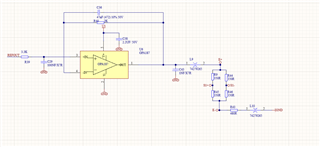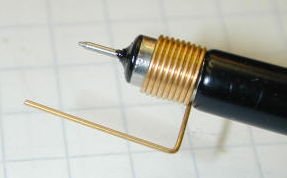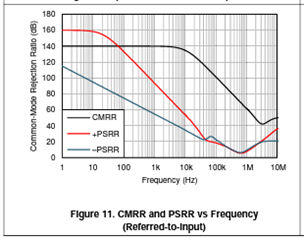Hi
I used OPA187 as a buffer ,the input REFOUT is 2.5V, the output provide the 2.5V for a resistance bridge(350R) and a resistance 480R(see the below picture 1).
but the wave between E+ and E- always havs the low frequency noise(about 200MV PPVoltage)(see the below picture 2).
the period time for the noise ware is about 26ms.
It is strange that the wave bewween E+ and GND , and the wave bwteen E- and GND are good , PPV for noise just below 30mV.
I add a capacitance 2.2uf to reduce this noise ,but still have 80-100mV.
I want to know what cause this low frequency noise , and how can remove or reduce this noise.
Thanks and best regards
Kim






